How the ultra-rich do home gyms
No medicine balls bursting at the seams in sight - only Italian leather and natural oak for these athletic aesthetes.

During the pandemic, working from home naturally gave way to working out from home. Fitness apps and YouTube trainers became the norm as we attempted to carve out space in cluttered living rooms or empty garages for squats and sit-ups.
For some, canned foodstuffs masqueraded as weights but, eventually, new online platforms started renting out fitness equipment for those stuck in quarantine.
Even when public gyms reopened and the smell of sweat was replaced with the scent of sanitiser, memberships still hovered on pause. Others approached with caution.
“People realised they could get a full workout at home,” says Debra Tay, chief design officer and co-founder of Cycling Bears, an upscale fitness equipment provider that specialises in residential and hospitality gyms.
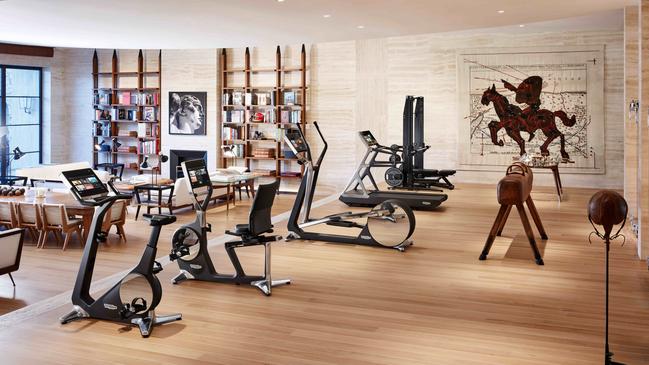
Tay says that from a practical perspective, people came to understand they needn’t be beholden to the hours of a commercial gym. Home workouts and “exercise snacks” of 10-15 minute increments were great options but impossible to replicate in the framework of a traditional office.
The home gym is no longer synonymous with a couple of dumbbells and a treadmill tucked out of view. For the high-end market, the experience has been redefined, with everything from renewable cork yoga mats to Italian leather medicine balls, timber kettlebell stands and transparent state-of-the-art glass bikes so beautiful that they’re worthy of being on display. Architects and interior designers are celebrating these premium offerings, integrating them into the home environment.
For athletic aesthetes, home gyms are no longer an afterthought. UK-based luxury equipment manufacturer Paragon Studio regularly works with interior designers and architects, advising on things such as audio-visual equipment, flooring, storage, and space-saving multifunctional machines.
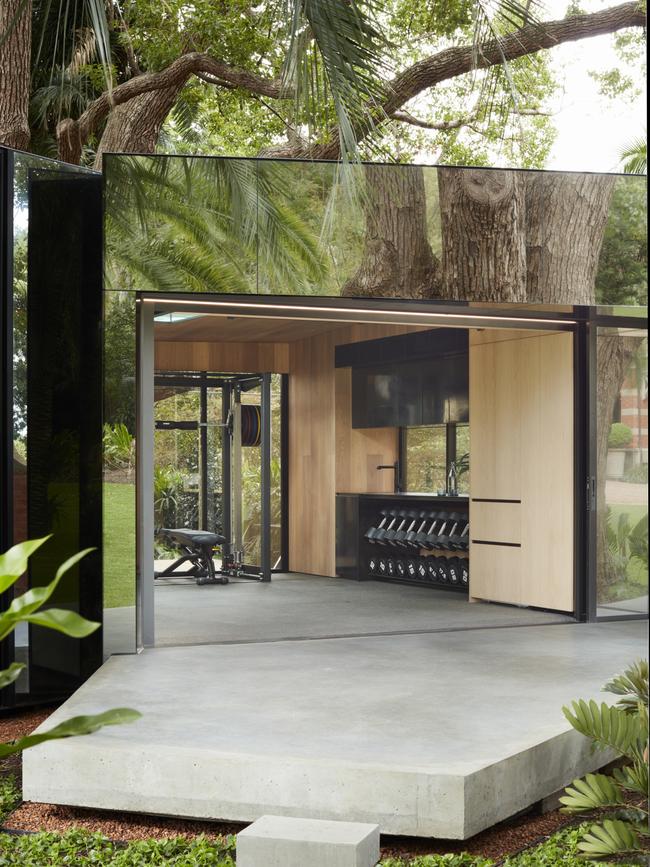
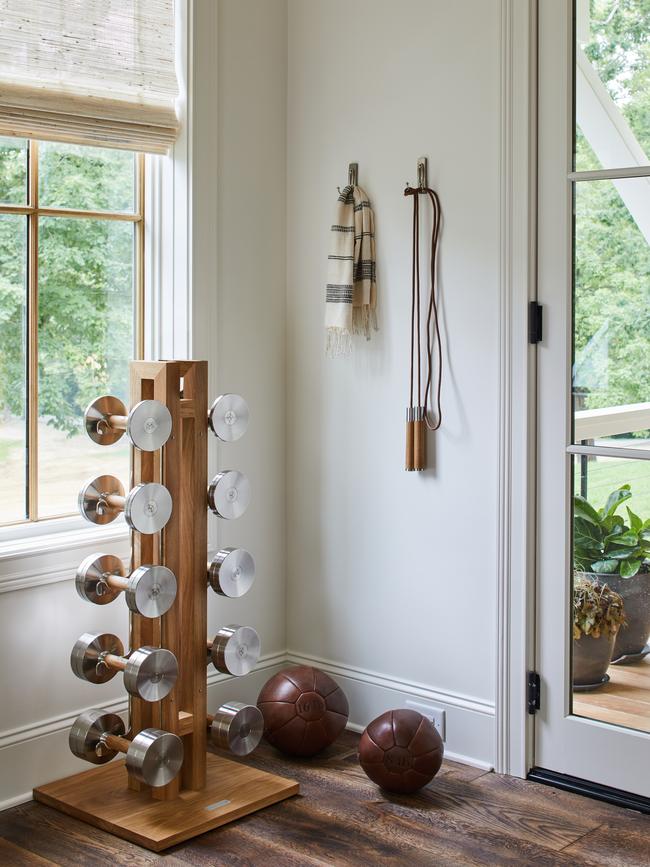
“Our slice of this market is obviously at the most premium end, and our products appeal to gym fanatics with an eye for exquisite design, those with an eye on sustainability and buyers with a large budget,” says creative director Edward Thomas.
“In the past, equipment has been very much aimed at commercial environments, and the aesthetics have been largely focused on functionality rather than form, with lots of grey plastic and bulky parts.”
In contrast, Paragon Studio offers the choice of bespoke monogramming, metal components in rose gold, leather hide for bench pads and custom-stained woods that seamlessly blend with the interiors.
When Sydney-based architect Phillip Arnold of Plus Minus Design was renovating a Queen Anne-style house in Bellevue Hill, the brief included the addition of a separate, dedicated garden pavilion for a gym that could double as guest accommodation. Clad in bronze mirror, the Stealth Pavilion is so well disguised that it’s almost undetectable.
“The interior does double duty with walls and joinery in American oak, which is durable enough to survive vigorous use but also provides the warmth of a residential space,” says Arnold. “In guesthouse mode the dumbbell rack becomes a kitchenette and a sofa replaces the weight training machine.”
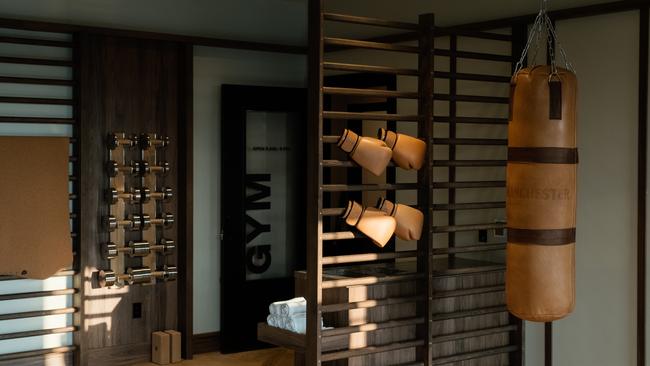
While best known for its fitness products, award-winning Italian company Technogym also offers a personalised consultancy service to help customers integrate high-tech equipment into domestic settings in a way that “speaks the same language and fits into the home in a harmonious way”. Their Personal Line, conceived by Italian architect Antonio Citterio, features a strong “visual language that reflects the energy of a modern home.”
Tay, a former investment banker who studied interior design, stresses the importance of the home gym layout and works closely with customers to establish the most effective floorplan.
“It’s important to understand their routine and space restrictions to specify the equipment that we customise to match the rest of the home,” she says. Cycling Bears represents stylish brands such as Ciclotte, whose stationary bikes look like a piece of art (they retail for about $24,000), and German-based WaterRower NohrD, which handmakes rowers and weights from timber and state-of-the-art components.
While it may not necessarily produce better results, Tay says a luxury exercise studio in an elevated environment can be inviting and a great motivator.
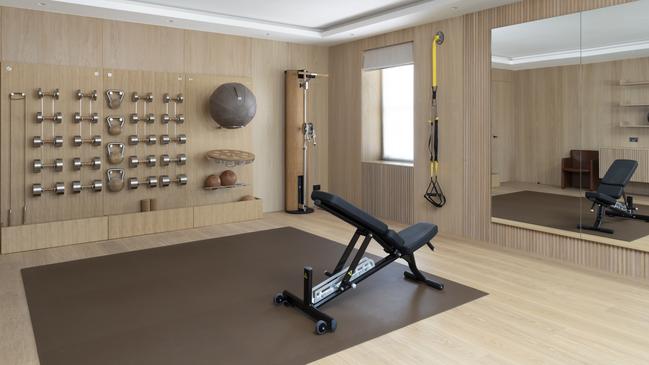
“Beautiful natural materials can heighten the experience: the intoxicating smell of top-quality leather and beautiful oak or walnut timber floorboards instead of vinyl flooring. You’ll likely look forward to the gym rather than finding it a chore.”
She estimates that a tailor-made residential gym can cost anywhere from $5000 to $150,000, depending on the scope and size, but one of their recent projects in Singapore saw costs soar to $180,000.
Budget often doesn’t come into play for Paragon Studio’s customers, with clients including American technology billionaires, Middle Eastern royal families and one of their most significant projects on $US362m ($554m) superyacht Alpho.
But it’s the absence of travel and the provision of privacy that Thomas says is the greatest luxury. “Play your own music loud, wear what you want, drop the weights, shout, whatever makes your workout!”



To join the conversation, please log in. Don't have an account? Register
Join the conversation, you are commenting as Logout